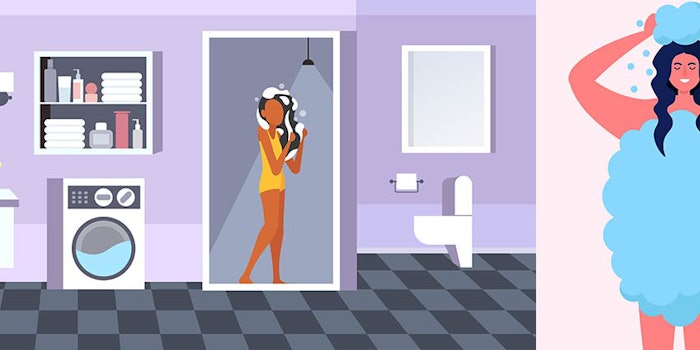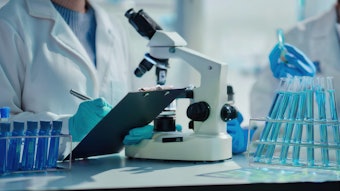
Rising consumer scrutiny of beauty and personal care product labels is nothing new, but recent news shows that, even in a pandemic, clean beauty is marching forward—including ingredient bans.
This month, L’Oréal signed a deal to acquire Thayers Natural Remedies, a U.S.-based natural skin care brand, which reportedly made $44 million in sales during 2019.
That same week, Beautycounter and Sephora announced a new retail partnership to make an assortment of Beautycounter products available at Sephora locations in August and online for a limited time in July.
Almost simultaneously, Ulta Beauty revealed that it had teamed up with clean beauty retailer Credo Beauty, allowing brands carried by Credo to be sold at Ulta and adding a Credo endcap featuring clean beauty brands at 100 Ulta locations.
The news comes amid the industry’s efforts to comply with the removal or reduction of 1,4-dioxane ahead of deadlines set by New York State.
History of a controversial ingredient
Back in 2007, a number of activist groups reported that some personal care products were found to contain harmful levels of 1,4-dioxane, an ether that can result from the ethoxylation process in cosmetics manufacturing, which primarily impacts emollients, surfactants and preservatives.
At the time, The Campaign for Safe Cosmetics reported that dozens of children’s bath products and adults’ personal care products contained, in some cases, double the maximum level of 1,4-dioxane allowed by the U.S. Food and Drug Administration (FDA).
The environmental group reported that nearly 80% of personal care products may have been "contaminated" with possible carcinogens.
The activist group noted that the chemical is considered a probable human carcinogen by the U.S. Environmental Protection Agency and an animal carcinogen by the National Toxicology Program. The organization also mentioned that the chemical is on California's Proposition 65 list of chemicals known or suspected by the state to cause cancer or birth defects (more on that below).
Around the same the time, the Environmental Work Group reported that 1,4-dioxane may be in 22% of all personal care products. The group analyzed 15,000 personal care products and concluded that 1,4-dioxane may have been present in 57% of all baby soaps and 34% of all body lotions. (Cosmetic products generally contain no more than trace amounts of the material, limiting concerns about the presence of 1,4-dioxane in those applications.) According to the group, the potential for contamin¬ation with 1,4-dioxane, as assessed by computer analysis, was highest for 11 to 62 product types assessed.
The environmental group reported that nearly 80% of personal care products may have been "contaminated" with possible carcinogens. The group recommended that consumers avoid purchasing any of the 56 cosmetic ingredients that could contain 1,4-dioxane, including sodium laureth sulfate and “ingredients that include the clauses PEG, xynol, ceteareth and oleth.”
Industry representatives warned the legislation could result in popular brands being pulled off store shelves, leading to higher prices.
Brands paid attention to the controversy, despite the disputed science of the non-governmental organizations’ conclusions. In 2011, Johnson & Johnson delivered a letter to the Campaign for Safe Cosmetics committing to reduce 1,4-dioxane in all of its baby products to less than 4 ppm in the near term and, longer term, to replace the ethoxylation process.
The Environmental Working Group kept up the pressure in 2017, claiming that at least 8,000 products on the market contained ethoxylated ingredients that could be “contaminated” with 1,4-dioxane.
Despite all the attention, there remains questions whether 1,4-dioxane is indeed as “concerning” as portrayed. Chemists have voiced some skepticism, even among the consumer press.
New York State takes action
In December 2019, the advocacy led to action by lawmakers in New York. Citing the presence of 1,4-dioxane in Long Island well water, personal care and cosmetic products (including shampoos and body washes) containing 1,4-dioxane were to be phased out, per a bill signed by Gov. Andrew M. Cuomo. Industry representatives warned the legislation could result in popular brands being pulled off store shelves, leading to higher prices.
The personal care limit will decline to 1 ppm by the close of 2023.
The legislation, sponsored by Sen. Todd Kaminsky (D-Long Beach) and Assemb. Steve Englebright (D-Setauket), was lobbied by the Citizens Campaign for the Environment, a Farmingdale, New York-based advocacy group that tested 80 common household items such as laundry detergent, shampoo and body wash for 1,4-dioxane.
The group discovered that 65 of the products they tested in 2018 and 2019 contained the chemical. Products with the highest levels included shower gels from Victoria’s Secret, per the organization.
Suppliers and brands aren’t waiting for further regulatory clarity before taking action.
The law allows for no more than 2 ppm of 1,4-dioxane in personal care and no more than 10 ppm in cosmetics by December 31, 2022. The personal care limit will decline to 1 ppm by the close of 2023. The hope is that the limitations minimize the amount of 1,4-dioxane that goes down the drain and into waterways.
According to section 6295—A of the bill, “A manufacturer of a cosmetic product or personal care product, otherwise subject to the requirements of this section, may apply to the department for a one-year waiver from such requirements for a specific cosmetic product or personal care product, and upon such proof that the manufacturer has taken steps to reduce the presence of 1,4-dioxane in that product and is unable to comply with the requirements of this section. Thereafter, a manufacturer may apply for one additional one-year waiver for such product, upon its satisfaction of such similar proof.”
California’s action
As mentioned, 1,4-dioxane is on California's Proposition 65 list of chemicals known or suspected by the state to cause cancer or birth defects. The Office of Environmental Health Hazard Assessment (OEHHA) has set a safe harbor exposure level of 30 µg/day, while the 2005 California Safe Cosmetics Act requires cosmetics manufacturers to provide lists of the products they produce that contain 1,4-dioxane. The state has also launched a process to potentially impose additional regulatory limits on the material.
Industry innovation ramps up
Suppliers and brands aren’t waiting for further regulatory clarity before taking action. A number of suppliers have introduced 1,4-dioxane alternatives for products, as well as tools for simplifying the assessment of the chemical’s level in products.
While alternatives are emerging on the market, brands and their innovation partners will have to work quickly to ensure product quality amid the race to meet deadlines.










